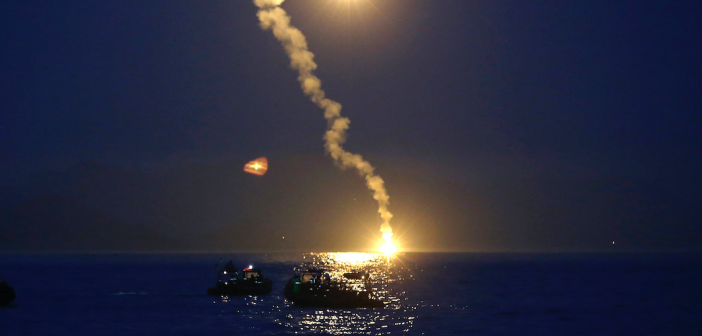You’re cruising at dusk or at night, and you suddenly see a flare shoot up in the distance. But at night distances can be confusing. How far away is it? How can you help?
Here are some tips from the Coast Guard. First, try the “fist method” to figure out the position of the flare from your boat. When you call the Coast Guard, they’ll ask where you are. Then they’ll need to know where the flare is. To determine the height of the flare from the water, hold your arm out straight and make a fist. Hold the bottom of the fist on the horizon with the thumb part pointing up. Then compare the height of the flare at its peak to your fist. Was it half a fist? Two fists?
The Coast Guard will ask you a series of questions. What direction was the flare in relation to your boat? What type of flare did you see: A meteor (falling rapidly); a parachute (falling slowly), or a handheld (burning near the surface)? Did the flare appear to have come from a boat? A plane? What is the current weather?
They also will ask if you can help or how they can contact you again to coordinate a rescue that may involve other boats. In most cases, other Good Samaritans will have seen the flare also and will want to help.
Finally, the Coast Guard urges you not to hesitate to fire a flare if you are in distress. But it also urges you not to shoot off your expired flares just to get rid of them. Instead, take them to a local fire department or contact the nearest Coast Guard station for advice. Read more:




